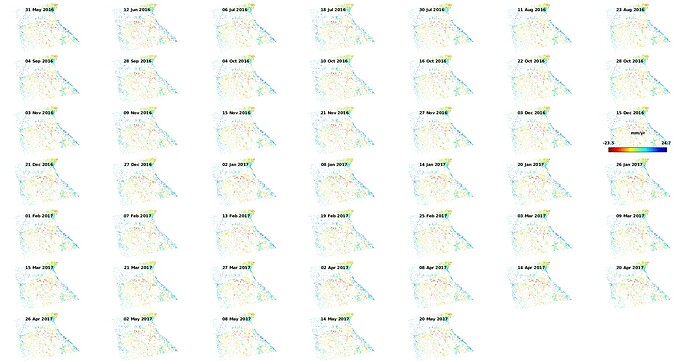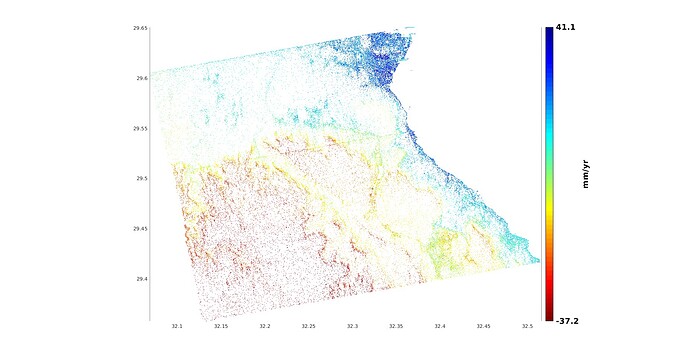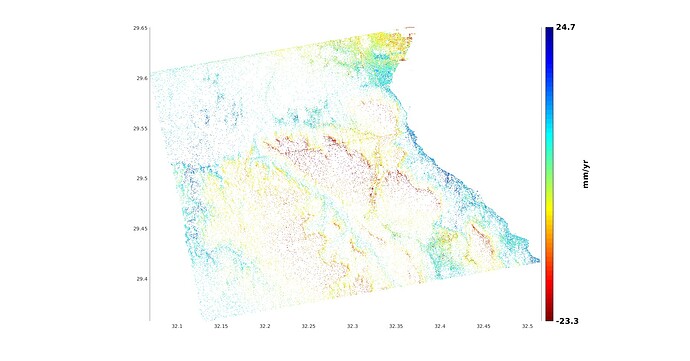This is how the velocity map look like "ps_plot (‘vdrop-do’) look like. I see that it’s barely ever changing when dropping an interferogram at a time.
and Those are (‘v’) top figure , (‘v-do’) middle figure and (‘v-dao’) bottom figure after stamps(7,7)
I can see that the removal of tropospheric contribution using the most basic APS linear has changed the LOS relative velocity from large negative values into small positive values especially in the middle of the area near 29.5 to 29.45 lat and 32.2 to 32.35 long. But I am not sure whether the atmospheric correction was effective or did it introduce even more errors



